- Home
- Don Pendleton
Dying Art Page 5
Dying Art Read online
Page 5
Bruns pursed his lips. “Find out who the other buyer—the owner now—is.”
Before Tragg could reply, the phone on Bruns’s desk buzzed. The groundhog checked the screen, held his palm toward Tragg and picked up the phone.
“What is it?” he asked.
The volume was cranked up so loud that Tragg could hear the other person’s voice: “The demonstration’s ready, sir. And our guests are here.”
Bruns sighed again and said, “Make them comfortable in the waiting room. I’ll be there shortly. Do not proceed without me, understand?” He hung up and had a distracted expression on his face.
Tragg continued to watch the man, waiting. After a solid fifteen seconds, he said, “I should know more in a day or two. I’ve got my best men working on it.”
Bruns took a deep breath. His whole body seemed to have deflated.
“I couldn’t help but overhear,” Tragg said. “Was that call in regard to the special project?”
For a moment Bruns seemed to be thrown off by the question, then he recovered and nodded curtly. “Yes, why?”
It was amazing to Tragg that this guy had amassed such a fortune in the rough and tumble world of innovated product design. “Just curious. My team was originally hired to provide security for this facility and the XR-25, before you sent me on that special assignment. I was wondering how it’s progressed.”
The answer seemed to satisfy the groundhog. “The project’s almost completed. The Department of Defense morons are here and wanting to see a demonstration of its capabilities.” He stood. “And now I have to go pacify these pencil-necked geeks and show them what they’re going to be getting for all their money.” His face showed an expression of utter disdain as he started for the door, waggling his hand for Tragg to follow. Bruns stopped abruptly and said, “Just remember, do whatever it takes, but I must have that artifact.”
“Yes, sir. You’ll have it. I guarantee it.”
Bruns drew his lower lip up into a near pout. “Keep me informed.” He adjusted the knot in his necktie and once again began walking toward the door.
“Say, is it all right if I accompany you?” Tragg asked. “I’ve heard so much about the weapon, and we’ve spent such a long time guarding the XR-25, that I feel like I’m a part of it.”
At the mention of his special project, Bruns smiled.
“Sure, come along. A man with your military background will be able to appreciate what we’ve accomplished with the downsizing.” He waited for Tragg to open the door, and then flashed another smile. “This baby’s really going to kick some enemy ass. Big time. I only wish I could take it into the field for some live-action fire against some real-life targets.”
Tragg nodded in agreement. If the groundhog only knew...
Cancun International Airport
Quintano Roo, Mexico
“Want to check out the weapons now?” Grimaldi asked, holding up the diplomatic pouch the State Department staffer had handed to him at Bolan’s direction.
The Executioner shook his head. “Not here. Plus, we’re overdue at the crime scene.” He turned to the heavyset consular agency man. “Where’s your car?”
“It’s over in the VIP parking,” the man said.
“I hope you have money for a taxi back to the agency.”
They were approaching the VIP parking area.
A look of incipient panic spread over the heavyset man’s face. “Our car... But it’s an official agency vehicle. I’m not authorized to give it to just anybody.”
“Consider it a loaner, then,” Bolan said, holding his hand out. “Keys.”
The man looked at Bolan’s size, build, the glacial expression on his face, then reached into his pants pocket and withdrew the keys. He started to hand them over, but hesitated. “I should call my supervisor first.”
“Call him or her after,” Bolan said.
After looking toward the female staffer, the agency man handed the keys over.
Bolan took them and pressed the alarm button. The headlights of a black Ford sedan began flashing, accompanied by an intermittent beeping of the horn. After reaching the vehicle, Bolan deactivated the alarm and popped the trunk. He opened the driver’s door and got in.
“But your associates,” the man said, his voice on the edge of pleading. “The two FBI agents who arrived... They rode with the National Police.”
“Good,” Grimaldi said as he tossed the diplomatic pouch into the trunk and slammed the lid. “We won’t have to worry about giving them a ride, then.”
“But the diplomatic pouch. That’s our property.”
“What? You want us to wash it before we give it back?” Grimaldi asked. He started toward the driver’s side, saw Bolan there, and got into the front passenger’s seat.
“I thought you liked it better when I drove?” he said.
“Only when we’re in an aircraft.” Bolan shifted the car into gear and backed out of the parking space.
The drive across the long bridge into Cancun took them an inflated fifteen minutes due to the extremely heavy traffic. Bolan forced his way into the steady stream of taxis, buses and limousines that seemed to be departing the airport at an unceasing pace.
“Keep your eyes open for a tail,” Bolan said.
Once they were clear of the congestion, Bolan saw a dilapidated playground on the right and pulled into it. A group of ragtag children played on broken swings and a bent merry-go-round. Without a word, Grimaldi got out when the vehicle came to a stop and began walking toward the back. The trunk lid popped open and he withdrew the pouch. He was back in the passenger seat in a matter of seconds.
“See anybody?” he asked.
Bolan shook his head. He was busy opening two apps on his phone. One did a quick skyward scan for any drones in the air, and the second was GPS navigation. The drone app came back with a negative finding. After entering the address of the crime scene, Bolan heard the computerized voice telling him to go six kilometers, and then turn right.
Grimaldi used a specialized tool on his key chain to unlock the pouch and pulled back the heavy zipper. He reached inside and withdrew two holstered weapons.
“Here’s your baby.” He grinned and set the Beretta 93-R on the seat next to the Executioner, then took his SIG Sauer P-220 out of its holster. Dropping the magazine, Grimaldi pulled back the slide ever so slightly to check if there was a round in the chamber. Upon seeing there was none, he reached into the pouch, coming out with two extra magazines.
“Looks like we’re already at the low ammo alert phase,” he said.
“Let’s hope we won’t need them at all,” Bolan said. “Maybe our Bureau brothers will loan us some of their ammo if we run short.”
“Straitlaced Bureau boys carrying weapons down here?” Grimaldi snorted a laugh. “That’ll be the day.”
They both took a few moments to fasten the holsters and magazine holders to their belts before resuming their journey. The GPS app announced that they would be at their destination in twelve minutes.
Grimaldi cranked his neck, studying the heavy traffic. “Twelve minutes, huh? Like I said, that’ll be the day.”
Lucien Technologies
Temptation, Arizona
Tragg stayed in the background as Bruns and his staff ushered the three Department of Defense reps into a large auditorium. They all took seats in the front row, and Bruns and a nice-looking woman ascended the stage in front. Bruns adjusted his lapel mic and tapped it with his index finger to test it. The sharp boom echoed in the big room, and he ambled over to the center edge of the stage.
“Welcome to Lucien Technologies, gentlemen,” Bruns said. “I apologize for keeping you waiting, but knowing why you’re here, I took the liberty of arranging the following presentation.” As he spoke, a large screen descended from the ceiling in the midpoint of the stage area. He paused and extended his open pal
m toward the woman, who flashed a high-wattage smile. “This is Ms. Raquel Hernandez, who’ll lead us through the latest developments of the XR-25.” The woman walked to the lectern off to the side. She wore a tight-fitting black dress, trimmed in white, which accented her great figure.
Smart move, Tragg thought. The DOD reps would be more interested in watching her than any bullshit on that screen. Tragg removed his smartphone from his pocket and got ready to record the presentation. It would come in handy in case he had to explain anything more to his real boss.
“Greetings, gentlemen,” Ms. Hernandez said. Her black hair was feathered back from her face giving her a movie star look. “I’m sure you’ve all been briefed on the latest technology, so please bear with me if this is a little repetitious.”
The lights in the auditorium dimmed noticeably.
“As I’m sure you know, the concept behind the XR-25 is nothing new,” Hernandez said. “The original idea for such a weapon dates back to the earliest war of the twentieth century when French inventor Louis Octave Fauchon-Villeplee invented an electric cannon, which is an early form of a rail gun. The idea was to fire a projectile using electric current rather than the more traditional gunpowder.”
She held up a remote and a diagram materialized on the screen.
“Little was done to develop the concept, and in World War II, the Germans resurrected the idea for an antiaircraft gun, but the weapon was never built. Plans for it were found after the war, and some research was done by the US, but it was soon deemed unfeasible due to the enormous amount of electricity it required to be operational.”
So far, this was nothing that Tragg hadn’t heard before. He and his team had been brought in to safeguard the research wing at Lucien Technologies after Bruns got the contract for the weapon’s development. Tragg had been aware of the navy’s use of rail guns, but again, it was a far cry from a success.
A new slide visualized showing a sailor on the deck of a ship loading a long projectile into a massive gun with a barrel that was forty feet if it was an inch.
“...our Navy’s tests with their destroyer-based versions are well documented to you, I’m sure,” Hernandez was saying. “And the advantages are many. One is speed of delivery. Whereas a Tomahawk cruise missile travels at 550 miles per hour...” She paused to flip the remote again, and another diagram popped up showing three wicked-looking projectiles labeled Tomahawk Cruise Missile 550 mph, Naval Artillery Shell 2000 mph, Rail Gun Projectile 5400 mph. “The rail gun’s delivery is 5400 miles per hour.”
She paused to let the effect of that info sink in.
“But the two critical problems remained intractable,” Hernandez continued. “Power and wear-and-tear.”
She flipped to the next slide.
“We’ve effectively dealt with each of these, and developed a new enhancement that gives the XR-25 something that no modern weapon has had before—an actual calculable payoff.”
Hernandez went on to explain how scaling down the size of the rail gun had verified the logical assumption that less electric power was needed. “It can now be placed on the bed of a structurally enhanced pickup truck and transported from place to place within the field of operations. And our special metal framework, which is constantly being covered and recovered with a state-of-the-art specialized lubricant, has significantly reduced the friction that repeated firing inevitably causes.”
The screen image faded out and the screen itself began to retract into the ceiling. The changes in the lighting began to subtly shift away from Hernandez to the center of the stage.
This was beginning to sound like a broken record to Tragg. He’d heard it all before, and had recited it almost word for word to his real boss, south of the border. But he knew they were nearing the payoff.
“Adding to its effectiveness,” Hernandez said, “is our special tungsten projectile load. We call it the TPL-13.” She paused and smiled again. “It’s a specially designed round that has a computerized GPS chip that can be preset to explode at the programmed coordinates. So not only can the XR-25 fire twenty rounds per minute, hitting a target several hundred miles away with pinpoint accuracy that’s capable of piercing virtually any fortification, it will only detonate once it’s reached its programmed coordinates.”
Imagine the possibilities, Tragg thought.
“Gentlemen,” Hernandez said as a sleek silver-colored heavy-duty pickup truck, replete with a wicked-looking cannon and twin generators anchored to the bed by gleaming struts, ascended into view in the center of the stage. “I give you Lucien Technologies newest entry into the ultimate defense of our country, the state-of-the-art, XR-25 Rail Gun.”
The truck’s ascent halted, and then it began to rotate on a circular axis.
“It can be driven anywhere,” Hernandez said. “Set up in a matter of minutes, and be programmed to hit a target over five hundred miles away at a speed of Mach seven, delivering a virtually indestructible shell with a preprogrammed detonation time. It’s tomorrow’s technology, today.”
Tragg recorded the rotating truck for a few more seconds, then shut off his phone.
Good presentation, he thought. Don Fernando would be impressed.
Chapter Four
San Martin Resort
Cancun, Mexico
The cabanas were adjacent to a cluster of white stucco bungalows located on a small peninsula that ran parallel to the main resort hotel. They were primarily designed to provide a modicum of privacy in that the beach area in front of them was not accessible to the public. A Mexican National Police car was parked by the entrance, and a uniformed officer stood by the gate holding an MP-5.
The Executioner pulled up and stopped next to the gate. He and Grimaldi got out, and Bolan flashed his Matt Cooper DOJ ID and addressed the guard in Spanish, saying he and Grimaldi were special agents from the US and asking where the other agents were.
The uniformed guard came to attention and saluted.
“Están allí,” he said, and stepped aside. “Número cinco.”
“Gracias.”
As they walked to unit number five, Bolan pointed at Grimaldi’s waist. “Make sure your weapon is well covered. Remember, this isn’t one of our usual missions.”
Grimaldi adjusted his belt, making sure that his sleeveless blue-and-white shirt kept his SIG Sauer well concealed.
Another uniformed policeman stood outside the cabana looking like a dark exclamation point against the background of the white building, the pristine sand of the beach and the blue water beyond. Bolan held up his ID once more, and Grimaldi followed suit. The guard snapped to attention as he stepped back. Bolan rapped on the door, which abruptly opened.
Sergeant Jésus Martinez of the Mexican Marines glared at them momentarily, and then a broad smile flashed under his bushy mustache. He was dressed in his customary BDUs.
“It’s good to see you, my friends,” Martinez said, holding out his hand.
As the quick exchange of greetings proceeded, Bolan scanned the bungalow. Three men stood near a large bloodstain on the intricate bamboo-carpeted floor. One was a Latino of perhaps forty with a pencil-thin mustache and a beige suit. His necktie was a combination of pale blue trimmed in gold, which matched his chain-link tie tack and ornate cufflinks. The other two, both in their late twenties, wore blue suits, white shirts, black-and-gray-striped ties and latex gloves—typical FBI protocol. The larger of the two was tall enough to look Bolan in the eye. His brown hair was clipped military short.
“May I help you?” he asked.
Bolan started to hold up his credentials but before he could speak, Martinez interceded.
“Agent Webber, I can vouch for both of them,” he said. “We have been on many missions together, and believe me, you could not hope for finer partners.”
“I don’t recall asking for any partners.” The FBI man’s voice had a distinctive New England accent
to it. Bolan placed it as possibly Massachusetts or Vermont.
“Cooper, Department of Justice,” Bolan said, holding up his ID with his left hand and extending his right. Grimaldi did the same.
The FBI agent shook it, but scrutinized both of them carefully. “I’m Special Agent Thomas Webber.” He handed Bolan his business card, and then cocked his head toward his partner. “Special Agent Raymond Louis.”
Louis was a black man who appeared to be trim and fit.
“And this is Lieutenant Efraim Romero,” Webber said, indicating the man in the beige suit. “Mexican National Police.”
Bolan offered his hand but Romero merely moved his head slightly, a trace of a smile on his lips.
Webber frowned. “DOJ? What are you doing here? This is a Bureau case.”
“Two American agents getting murdered sets off a lot of buzzers,” Grimaldi said.
“Dos de mis marinos fueron asesinados, también,” Martinez said.
“What was that?” Webber asked, turning.
“He said two of his marines were also killed,” Bolan said.
Webber raised his eyebrows. “I see you speak Spanish. That one of the reasons they sent you down here? Because Special Agent Louis is fluent, as well.”
The black agent’s eyes narrowed as he studied them.
“Hey, pal, we’ve been assigned to look into this matter,” Grimaldi said. “We heard there may be a possible terrorist tie-in.”
Webber seemed taken aback by this comment. He was silent for several seconds, and then motioned to Louis, who held up his smartphone, showing a picture of a piece of paper inside of a clear plastic evidence bag. The paper had writing scrawled on it.
Grimaldi leaned forward studying the screen. “It says... Vengeance.”
Louis was surprised. “You read Arabic?”
The pilot affected an expression of surprise. “Don’t you?” He shook his head, then shot a surreptitious wink at Bolan.
“Why don’t you bring us up to speed on what you’ve got so far?” Bolan asked. “I assume you sent that photo in to be analyzed?”

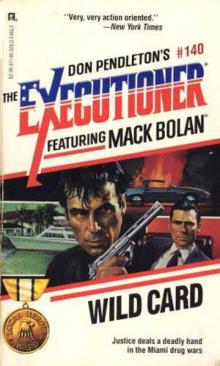 Wild Card
Wild Card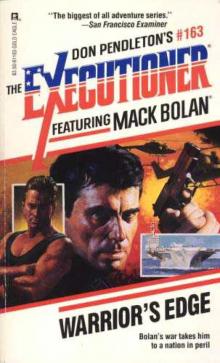 Warrior's Edge
Warrior's Edge Blood Vortex
Blood Vortex Lethal Vengeance
Lethal Vengeance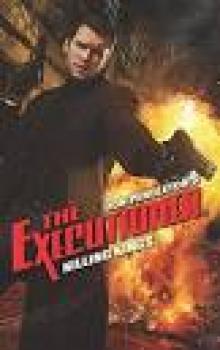 Killing Kings
Killing Kings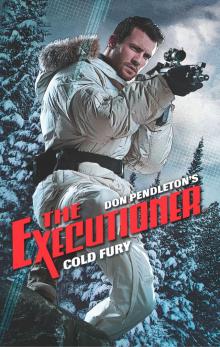 Cold Fury
Cold Fury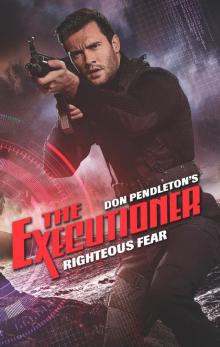 Righteous Fear
Righteous Fear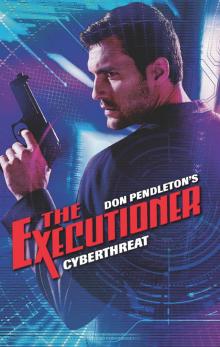 Cyberthreat
Cyberthreat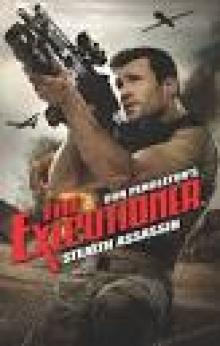 Stealth Assassin
Stealth Assassin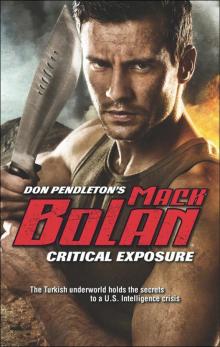 Critical Exposure
Critical Exposure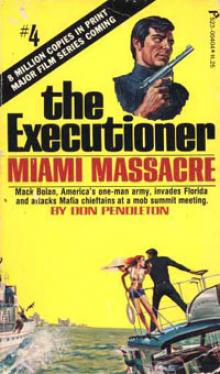 Miami Massacre te-4
Miami Massacre te-4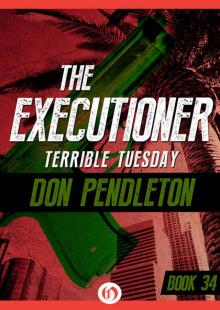 Terrible Tuesday
Terrible Tuesday Dying Art
Dying Art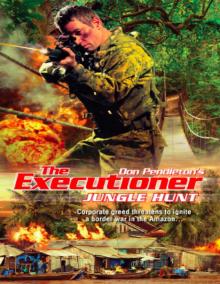 Jungle Hunt
Jungle Hunt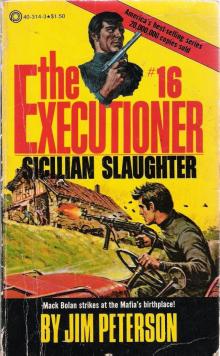 Sicilian Slaughter
Sicilian Slaughter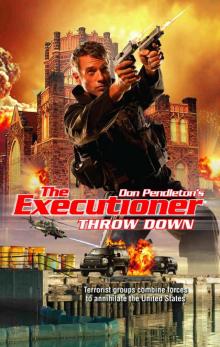 Throw Down
Throw Down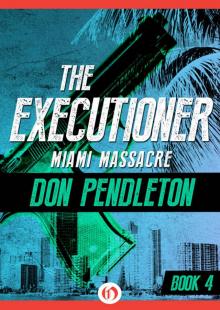 Miami Massacre
Miami Massacre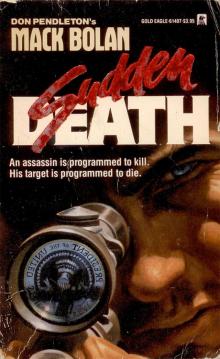 Sudden Death
Sudden Death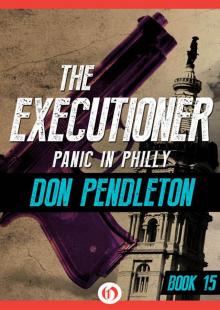 Panic in Philly
Panic in Philly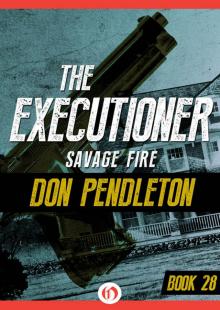 Savage Fire
Savage Fire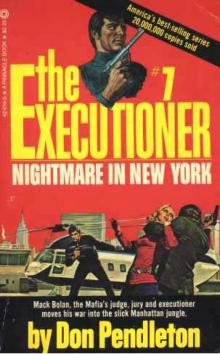 Nightmare in New York te-7
Nightmare in New York te-7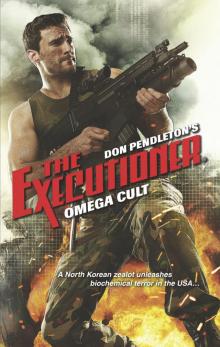 Omega Cult
Omega Cult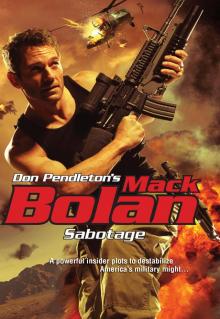 Sabotage
Sabotage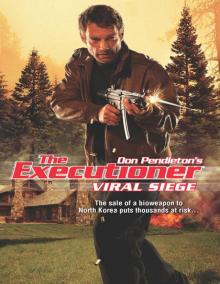 Viral Siege
Viral Siege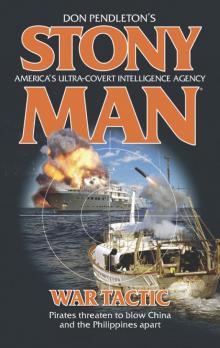 War Tactic
War Tactic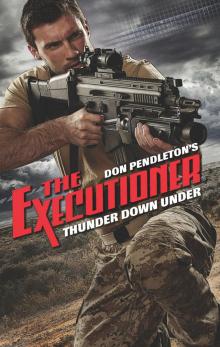 Thunder Down Under
Thunder Down Under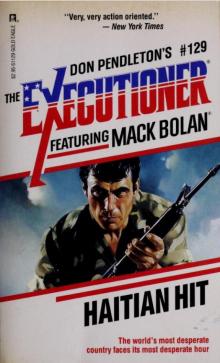 Haitian Hit
Haitian Hit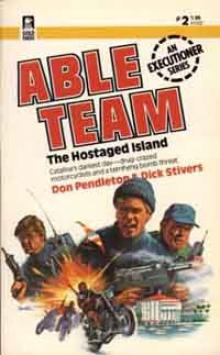 The Hostaged Island at-2
The Hostaged Island at-2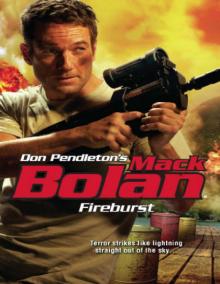 Fireburst
Fireburst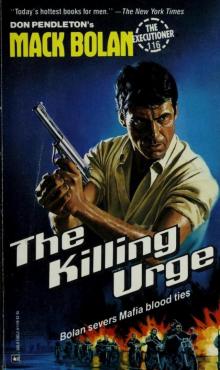 The Killing Urge
The Killing Urge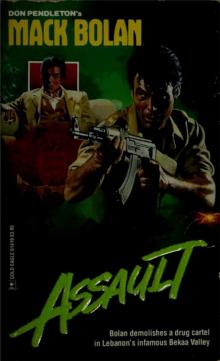 Assault
Assault Ashes To Ashes: Ashton Ford, Psychic Detective
Ashes To Ashes: Ashton Ford, Psychic Detective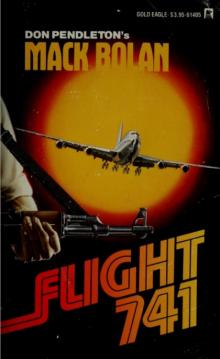 Flight 741
Flight 741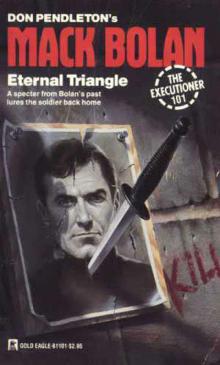 Eternal Triangle
Eternal Triangle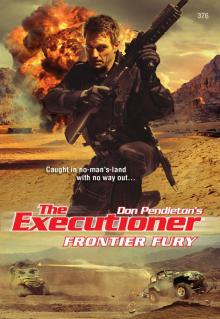 Frontier Fury
Frontier Fury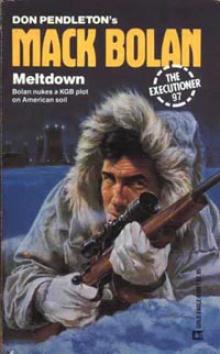 Meltdown te-97
Meltdown te-97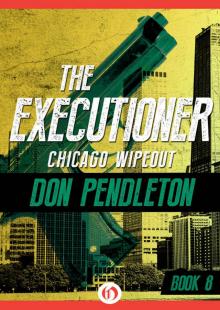 Chicago Wipeout
Chicago Wipeout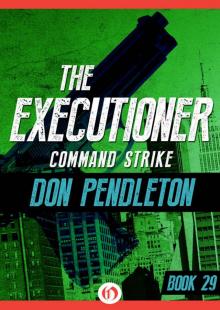 Command Strike
Command Strike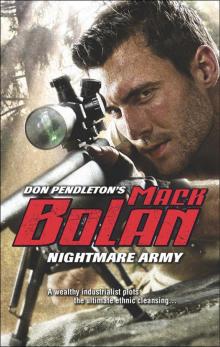 Nightmare Army
Nightmare Army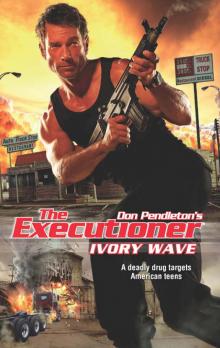 Ivory Wave
Ivory Wave Combat Machines
Combat Machines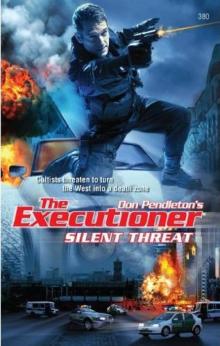 Silent Threat
Silent Threat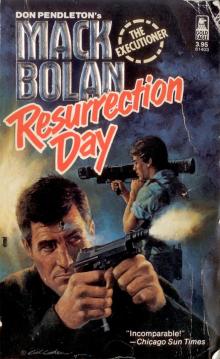 Resurrection Day
Resurrection Day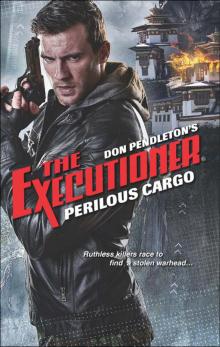 Perilous Cargo
Perilous Cargo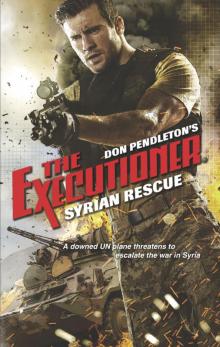 Syrian Rescue
Syrian Rescue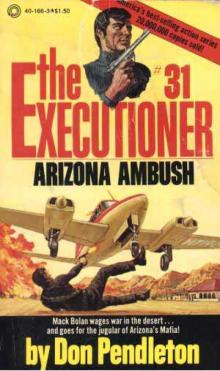 Arizona Ambush te-31
Arizona Ambush te-31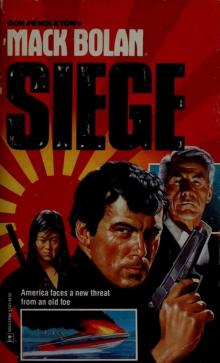 Siege
Siege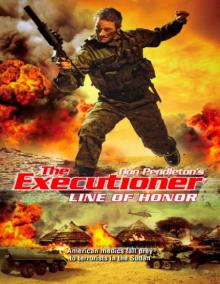 Line of Honor
Line of Honor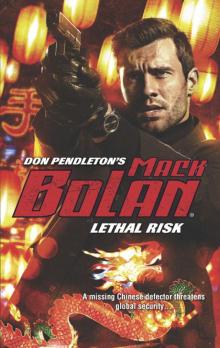 Lethal Risk
Lethal Risk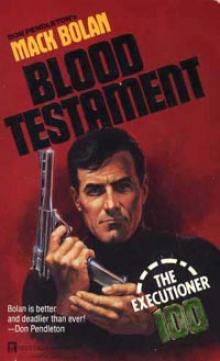 Blood Testament te-100
Blood Testament te-100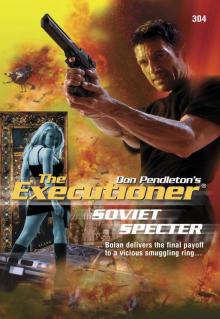 Soviet Specter
Soviet Specter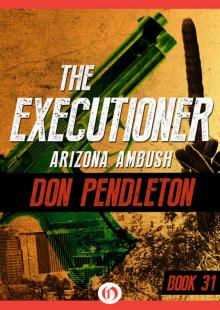 Arizona Ambush
Arizona Ambush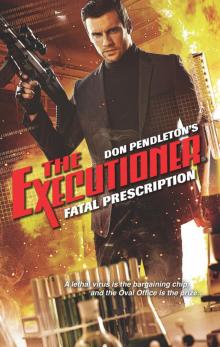 Fatal Prescription
Fatal Prescription Deep Recon
Deep Recon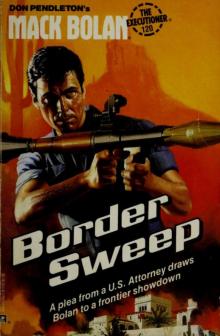 Border Sweep
Border Sweep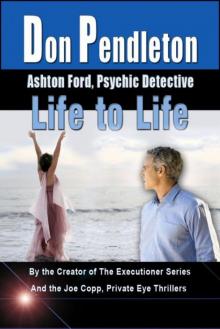 Life to Life
Life to Life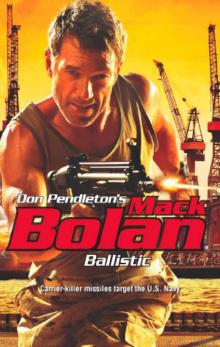 Ballistic
Ballistic Hellbinder
Hellbinder Time to Time: Ashton Ford, Psychic Detective (Ashton Ford Series Book 6)
Time to Time: Ashton Ford, Psychic Detective (Ashton Ford Series Book 6)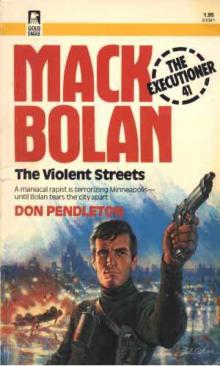 The Violent Streets te-41
The Violent Streets te-41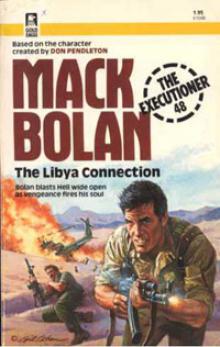 The Libya Connection te-48
The Libya Connection te-48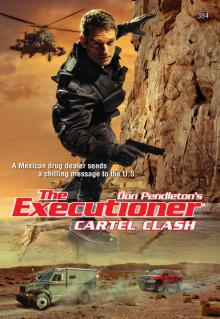 Cartel Clash
Cartel Clash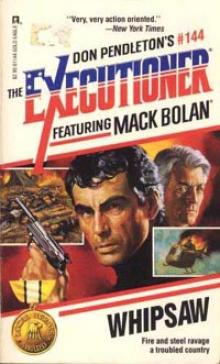 Whipsaw te-144
Whipsaw te-144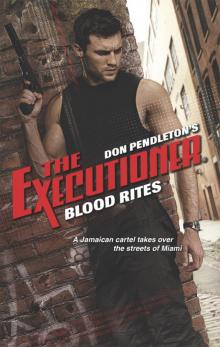 Blood Rites
Blood Rites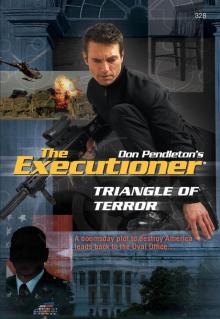 Triangle of Terror
Triangle of Terror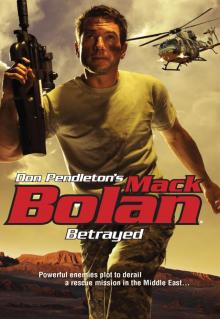 Betrayed
Betrayed San Diego Siege
San Diego Siege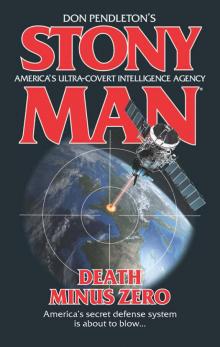 Death Minus Zero
Death Minus Zero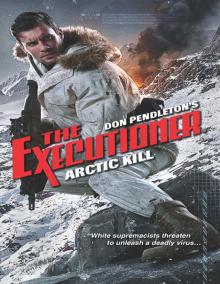 Arctic Kill
Arctic Kill Mind to Mind: Ashton Ford, Psychic Detective
Mind to Mind: Ashton Ford, Psychic Detective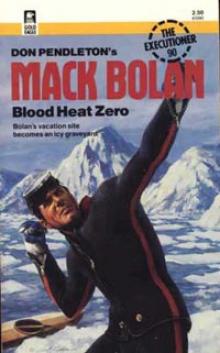 Blood Heat Zero te-90
Blood Heat Zero te-90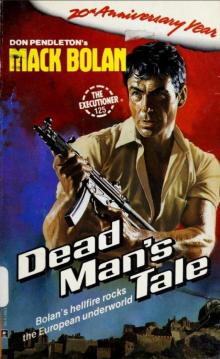 Dead Man's Tale
Dead Man's Tale Sunscream te-85
Sunscream te-85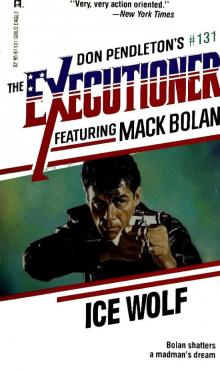 Ice Wolf
Ice Wolf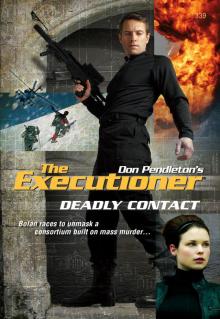 Deadly Contact
Deadly Contact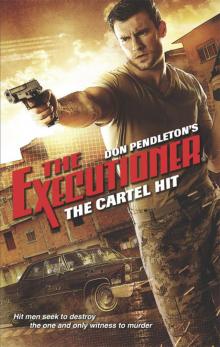 The Cartel Hit
The Cartel Hit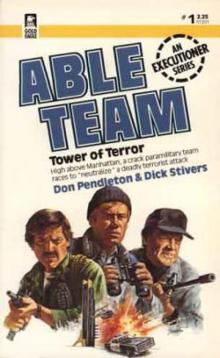 Tower of Terror at-1
Tower of Terror at-1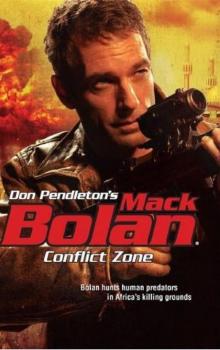 Conflict Zone
Conflict Zone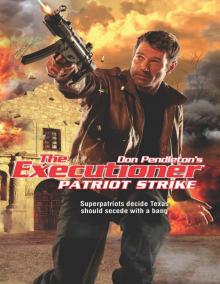 Patriot Strike
Patriot Strike Point Blank
Point Blank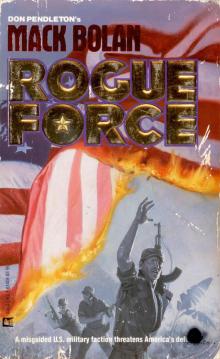 Rogue Force
Rogue Force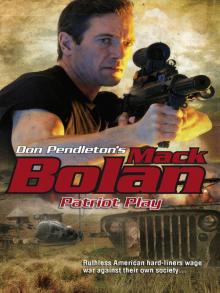 Patriot Play
Patriot Play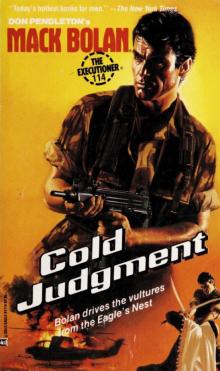 Cold Judgment
Cold Judgment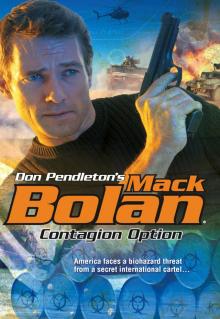 Contagion Option
Contagion Option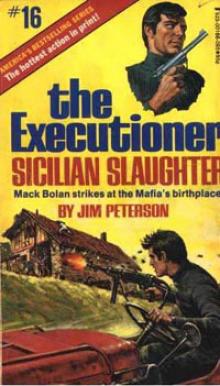 Sicilian Slaughter te-16
Sicilian Slaughter te-16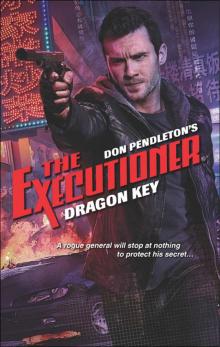 Dragon Key
Dragon Key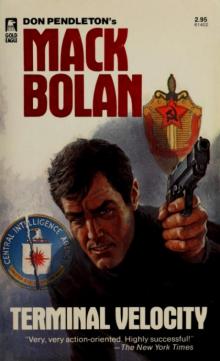 Terminal Velocity
Terminal Velocity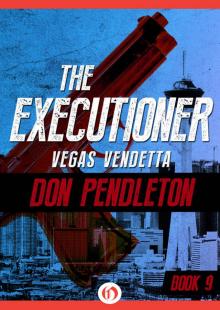 Vegas Vendetta
Vegas Vendetta Ashes To Ashes
Ashes To Ashes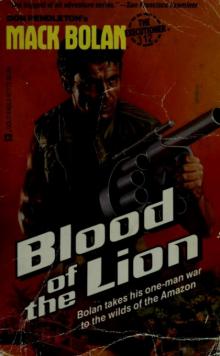 Blood of the Lion
Blood of the Lion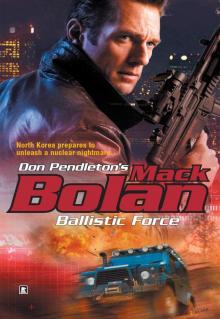 Ballistic Force
Ballistic Force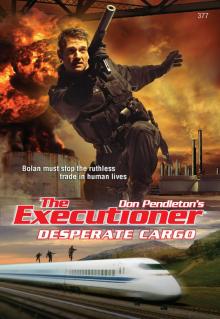 Desperate Cargo
Desperate Cargo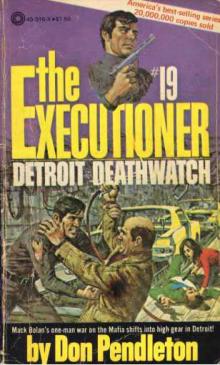 Detroit Deathwatch te-19
Detroit Deathwatch te-19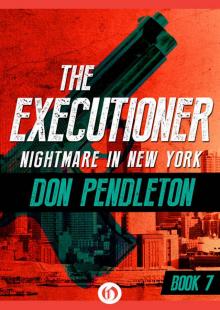 Nightmare in New York
Nightmare in New York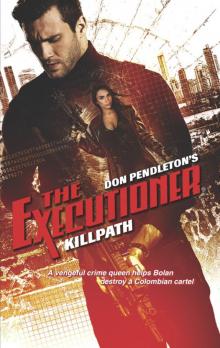 Killpath
Killpath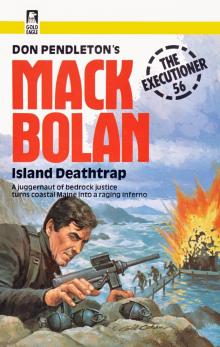 Executioner 056 - Island Deathtrap
Executioner 056 - Island Deathtrap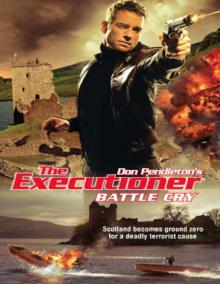 Battle Cry
Battle Cry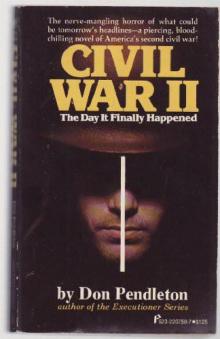 Don Pendleton - Civil War II
Don Pendleton - Civil War II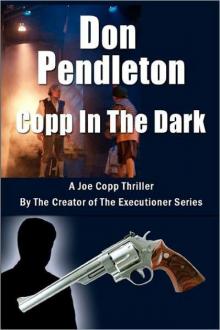 Copp In The Dark, A Joe Copp Thriller (Joe Copp Private Eye Series)
Copp In The Dark, A Joe Copp Thriller (Joe Copp Private Eye Series) China Crisis (Stony Man)
China Crisis (Stony Man)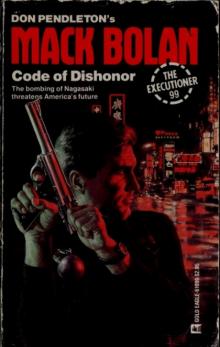 Code of Dishonor
Code of Dishonor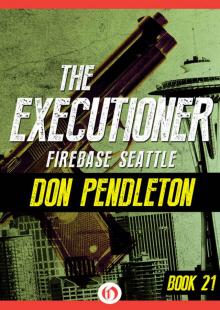 Firebase Seattle
Firebase Seattle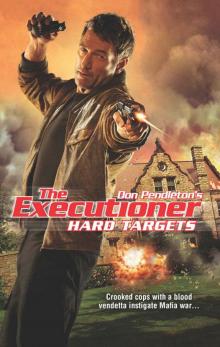 Hard Targets
Hard Targets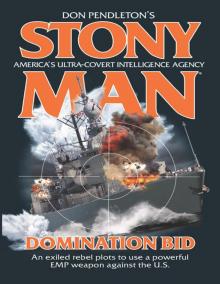 Domination Bid
Domination Bid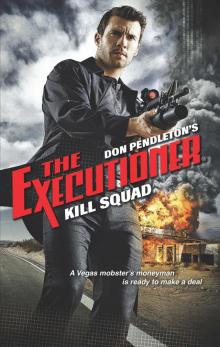 Kill Squad
Kill Squad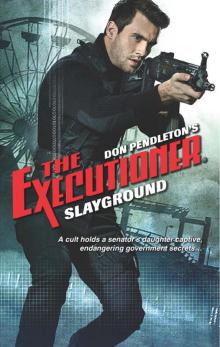 Slayground
Slayground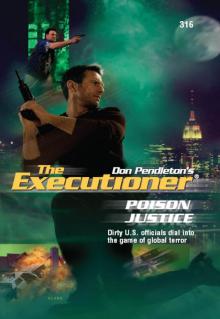 Poison Justice
Poison Justice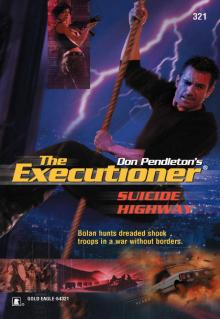 Suicide Highway
Suicide Highway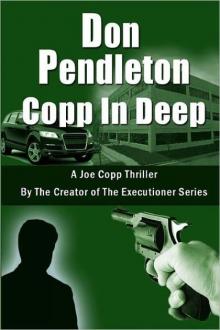 Copp In Deep, A Joe Copp Thriller (Joe Copp Private Eye Series)
Copp In Deep, A Joe Copp Thriller (Joe Copp Private Eye Series)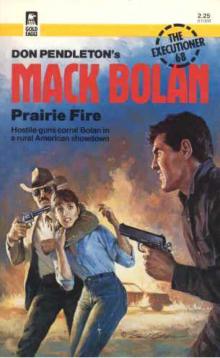 Prairie Fire
Prairie Fire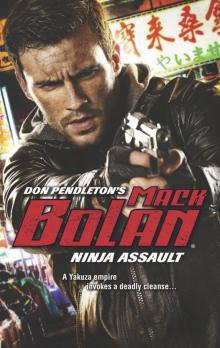 Ninja Assault
Ninja Assault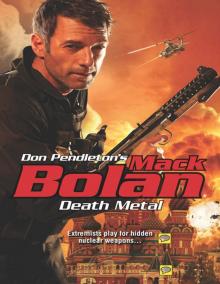 Death Metal
Death Metal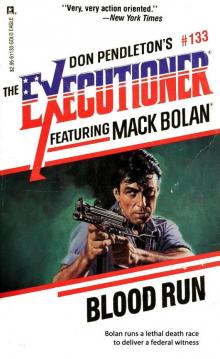 Blood Run
Blood Run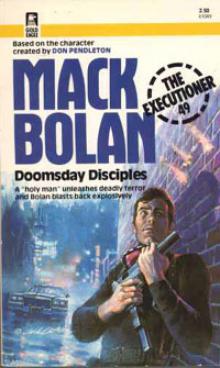 Doomsday Disciples te-49
Doomsday Disciples te-49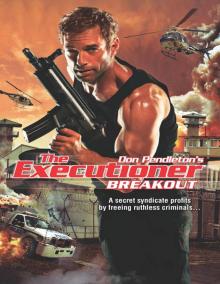 Breakout
Breakout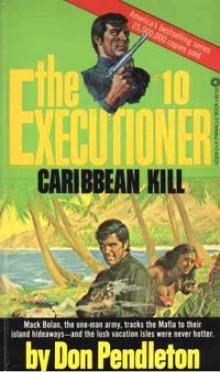 Caribbean Kill te-10
Caribbean Kill te-10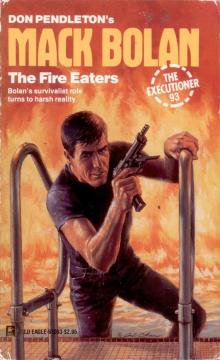 Fire Eaters
Fire Eaters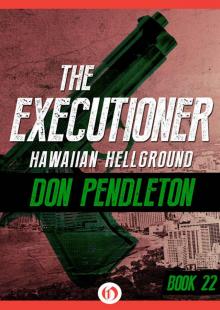 Hawaiian Hellground
Hawaiian Hellground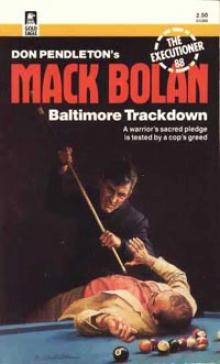 Baltimore Trackdown te-88
Baltimore Trackdown te-88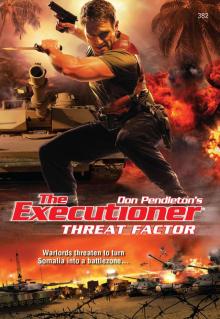 Threat Factor
Threat Factor Don Pendleton's Science Fiction Collection, 3 Books Box Set, (The Guns of Terra 10; The Godmakers; The Olympians)
Don Pendleton's Science Fiction Collection, 3 Books Box Set, (The Guns of Terra 10; The Godmakers; The Olympians)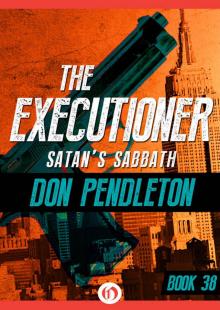 Satan’s Sabbath
Satan’s Sabbath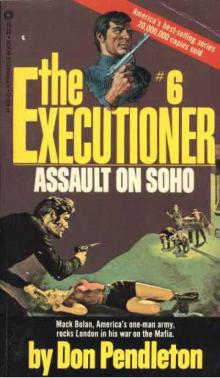 Assault on Soho te-6
Assault on Soho te-6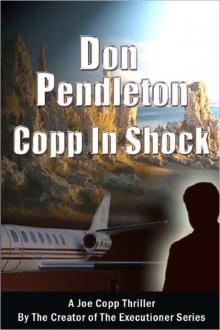 Copp In Shock, A Joe Copp Thriller (Joe Copp Private Eye Series)
Copp In Shock, A Joe Copp Thriller (Joe Copp Private Eye Series)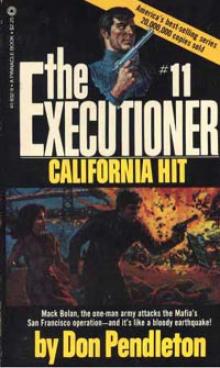 California Hit te-11
California Hit te-11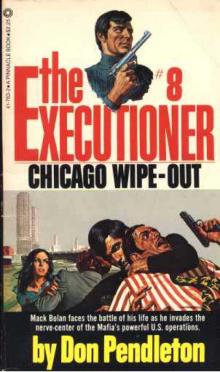 Chicago Wipe-Out te-8
Chicago Wipe-Out te-8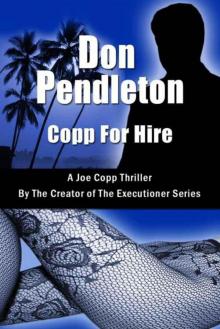 Copp For Hire, A Joe Copp Thriller (Joe Copp Private Eye Series)
Copp For Hire, A Joe Copp Thriller (Joe Copp Private Eye Series)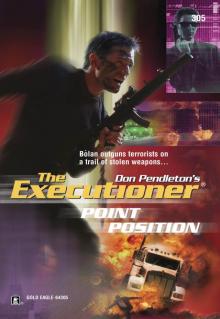 Point Position
Point Position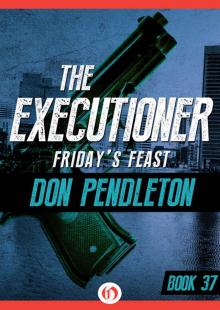 Friday’s Feast
Friday’s Feast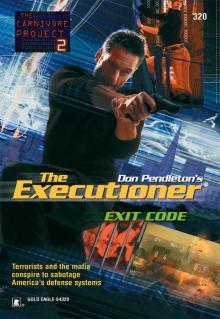 Exit Code
Exit Code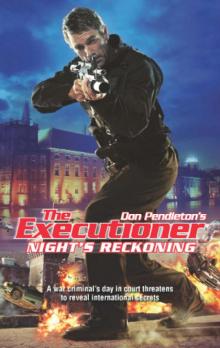 Night's Reckoning
Night's Reckoning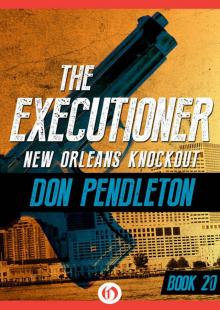 New Orleans Knockout
New Orleans Knockout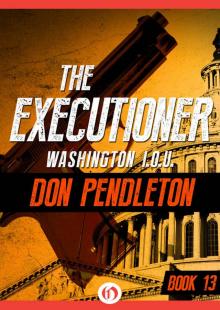 Washington I.O.U.
Washington I.O.U.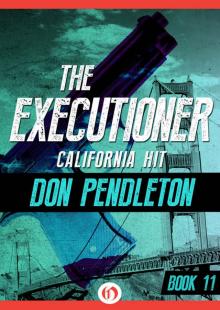 California Hit
California Hit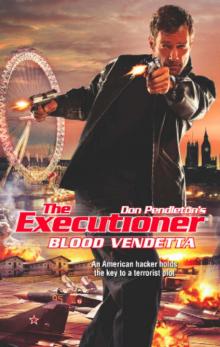 Blood Vendetta
Blood Vendetta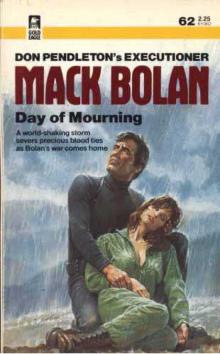 Day of Mourning te-62
Day of Mourning te-62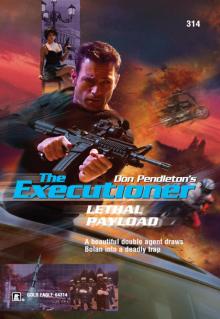 Lethal Payload
Lethal Payload Boston Blitz
Boston Blitz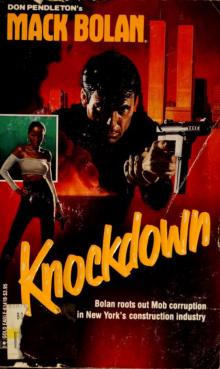 Knockdown
Knockdown Blood Sport te-46
Blood Sport te-46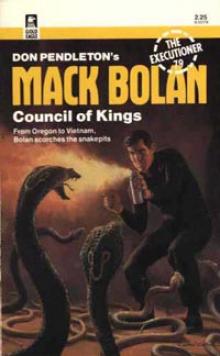 Council of Kings te-79
Council of Kings te-79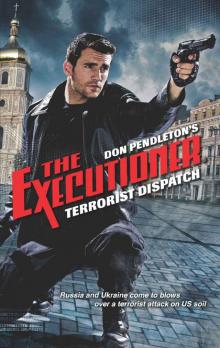 Terrorist Dispatch (Executioner)
Terrorist Dispatch (Executioner)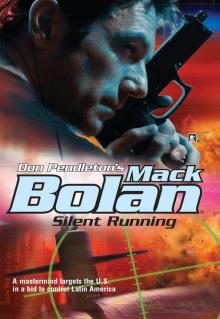 Silent Running
Silent Running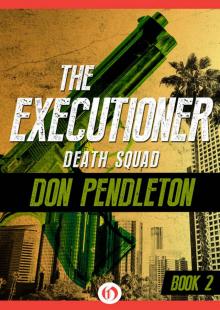 Death Squad
Death Squad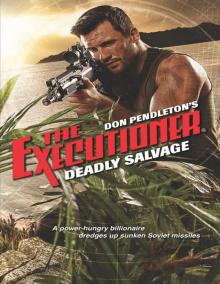 Deadly Salvage
Deadly Salvage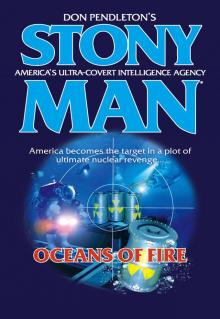 Oceans of Fire
Oceans of Fire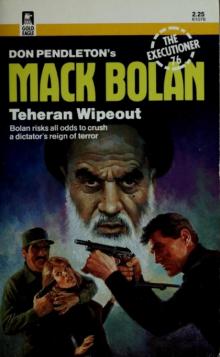 Teheran Wipeout
Teheran Wipeout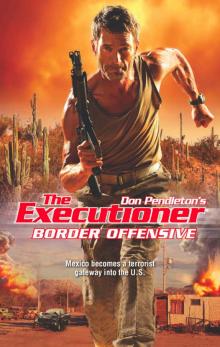 Border Offensive
Border Offensive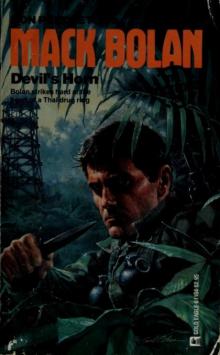 Devil's Horn
Devil's Horn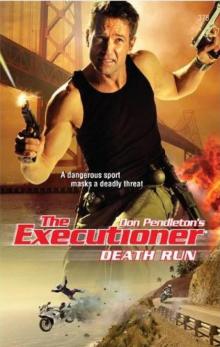 Death Run
Death Run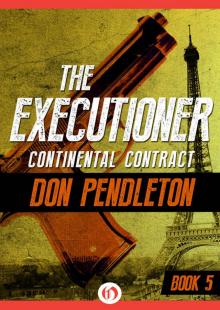 Continental Contract
Continental Contract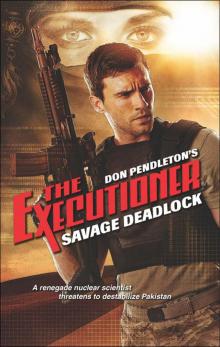 Savage Deadlock
Savage Deadlock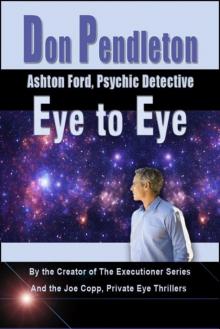 Eye to Eye: Ashton Ford, Psychic Detective
Eye to Eye: Ashton Ford, Psychic Detective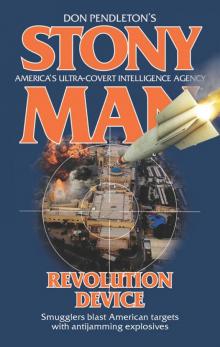 Revolution Device
Revolution Device Heart to Heart: Ashton Ford, Psychic Detective
Heart to Heart: Ashton Ford, Psychic Detective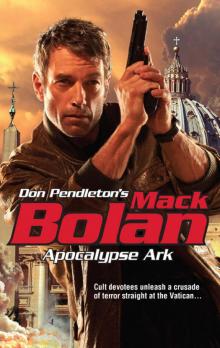 Apocalypse Ark
Apocalypse Ark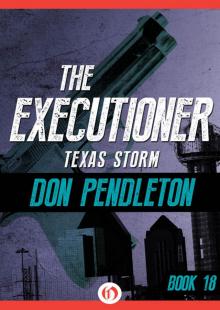 Texas Storm
Texas Storm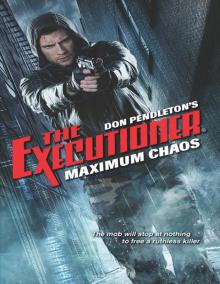 Maximum Chaos
Maximum Chaos Sensor Sweep
Sensor Sweep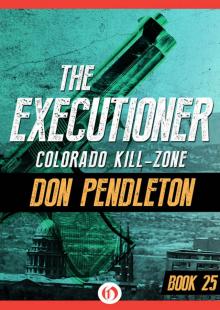 Colorado Kill-Zone
Colorado Kill-Zone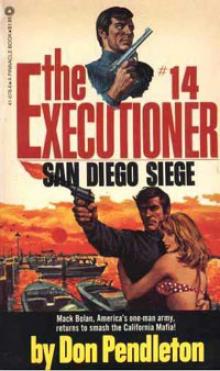 San Diego Siege te-14
San Diego Siege te-14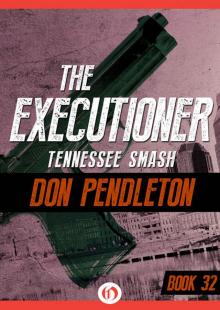 Tennessee Smash
Tennessee Smash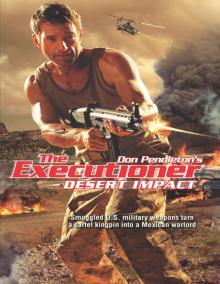 Desert Impact
Desert Impact Fire in the Sky
Fire in the Sky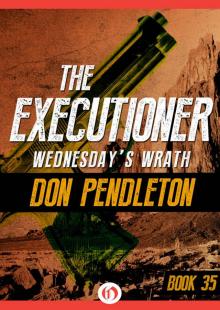 Wednesday’s Wrath
Wednesday’s Wrath Super Bolan - 001 - Stony Man Doctrine
Super Bolan - 001 - Stony Man Doctrine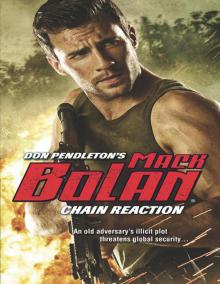 Chain Reaction
Chain Reaction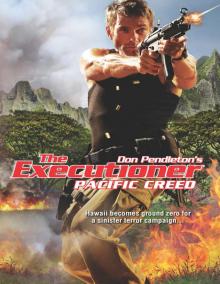 Pacific Creed
Pacific Creed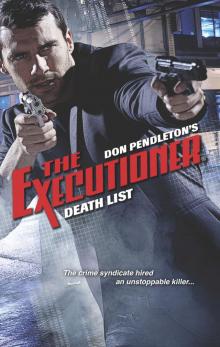 Death List
Death List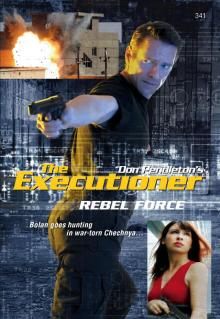 Rebel Force
Rebel Force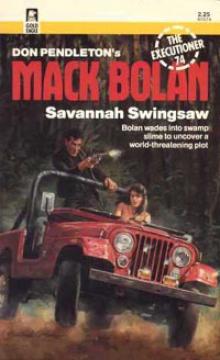 Savannah Swingsaw te-74
Savannah Swingsaw te-74 Heart to Heart
Heart to Heart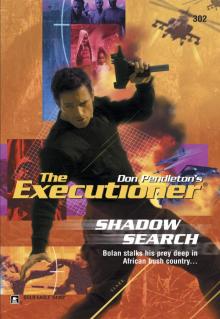 Shadow Search
Shadow Search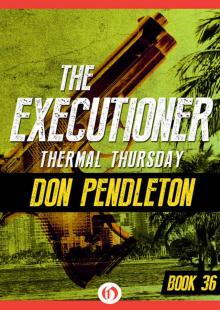 Thermal Thursday
Thermal Thursday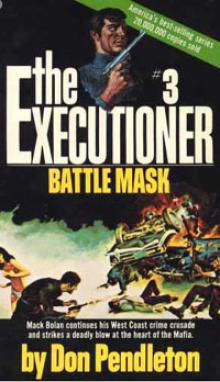 Battle Mask te-3
Battle Mask te-3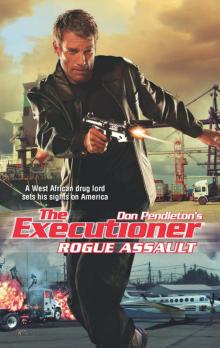 Rogue Assault
Rogue Assault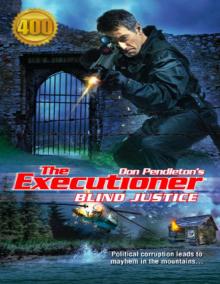 Blind Justice
Blind Justice Cold Fusion
Cold Fusion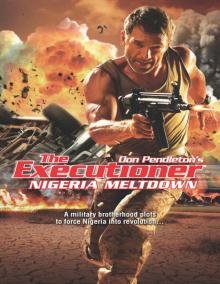 Nigeria Meltdown
Nigeria Meltdown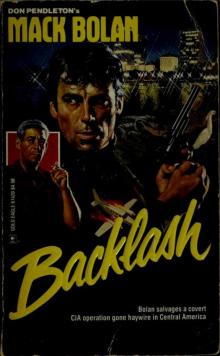 Backlash
Backlash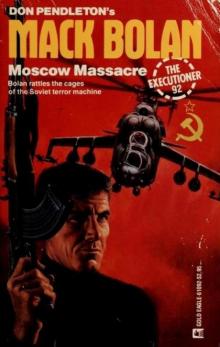 Moscow Massacre
Moscow Massacre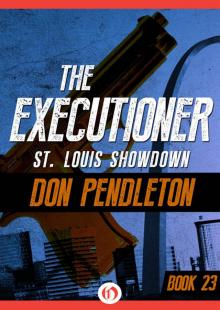 St. Louis Showdown
St. Louis Showdown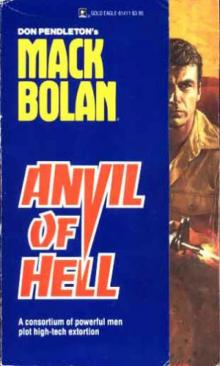 Anvil of Hell
Anvil of Hell Life to Life: Ashton Ford, Psychic Detective
Life to Life: Ashton Ford, Psychic Detective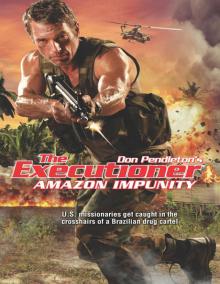 Amazon Impunity
Amazon Impunity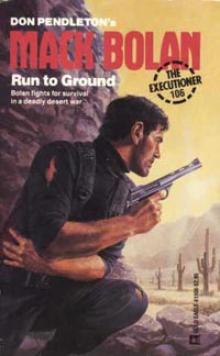 Run to Ground te-106
Run to Ground te-106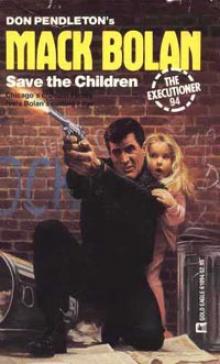 Save the Children te-94
Save the Children te-94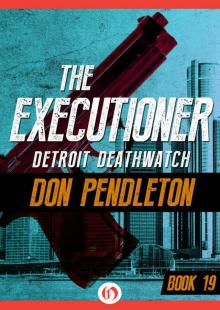 Detroit Deathwatch
Detroit Deathwatch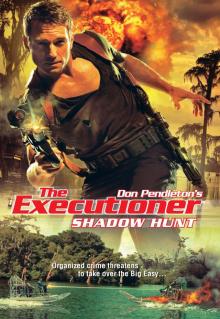 Shadow Hunt
Shadow Hunt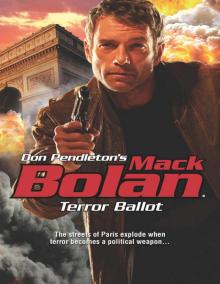 Terror Ballot
Terror Ballot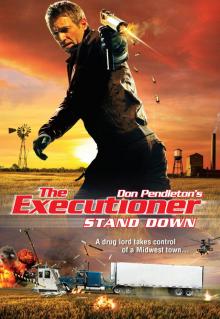 Stand Down
Stand Down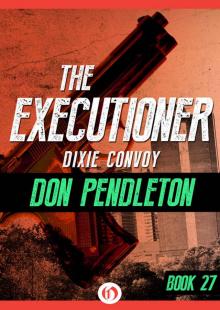 Dixie Convoy
Dixie Convoy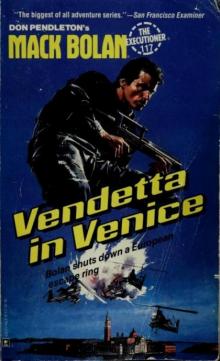 Vendetta in Venice
Vendetta in Venice War Against the Mafia
War Against the Mafia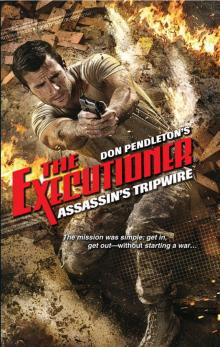 Assassin's Tripwire
Assassin's Tripwire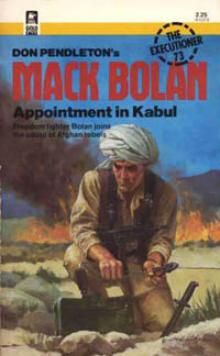 Appointment in Kabul te-73
Appointment in Kabul te-73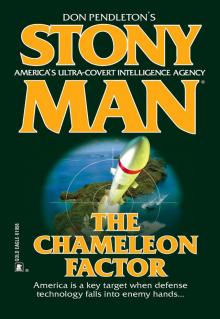 The Chameleon Factor
The Chameleon Factor Pirate Offensive
Pirate Offensive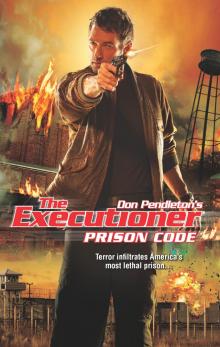 Prison Code
Prison Code Firebase Seattle te-21
Firebase Seattle te-21 Ground Zero
Ground Zero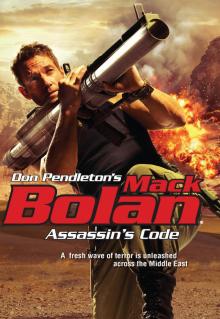 Assassin's Code
Assassin's Code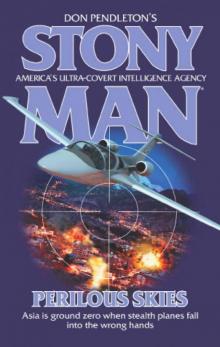 Perilous Skies (Stony Man)
Perilous Skies (Stony Man) Toxic Terrain
Toxic Terrain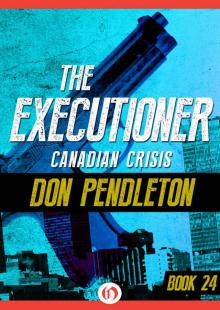 Canadian Crisis
Canadian Crisis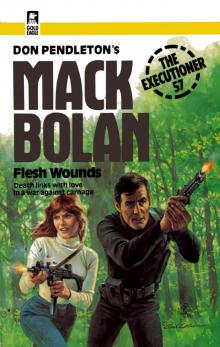 Executioner 057 - Flesh Wounds
Executioner 057 - Flesh Wounds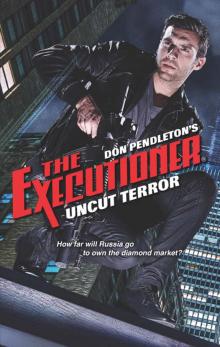 Uncut Terror
Uncut Terror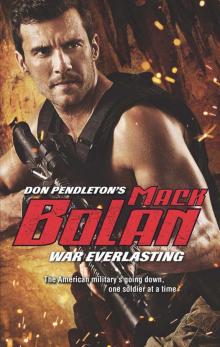 War Everlasting (Superbolan)
War Everlasting (Superbolan)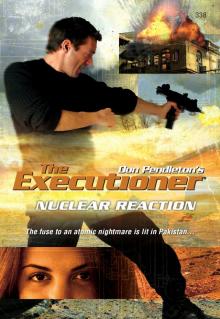 Nuclear Reaction
Nuclear Reaction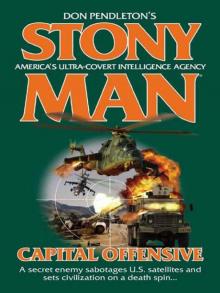 Capital Offensive (Stony Man)
Capital Offensive (Stony Man) Beirut Payback te-67
Beirut Payback te-67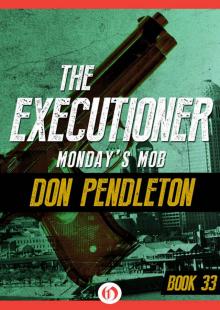 Monday’s Mob
Monday’s Mob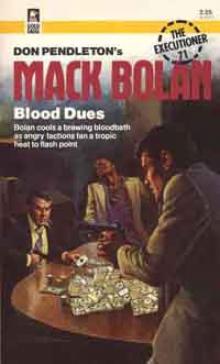 Blood Dues te-71
Blood Dues te-71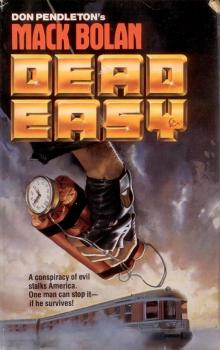 Dead Easy
Dead Easy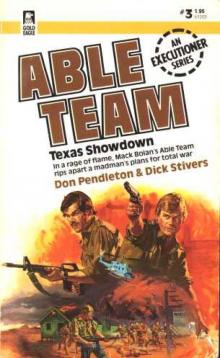 Texas Showdown at-3
Texas Showdown at-3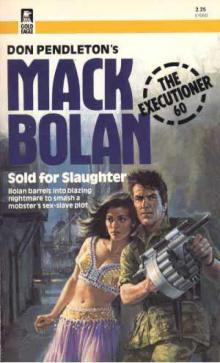 Sold for Slaughter
Sold for Slaughter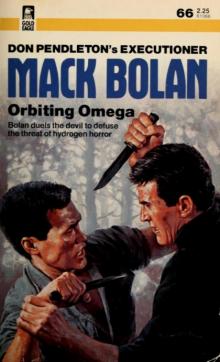 Orbiting Omega
Orbiting Omega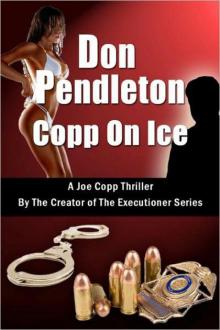 Copp On Ice, A Joe Copp Thriller (Joe Copp Private Eye Series)
Copp On Ice, A Joe Copp Thriller (Joe Copp Private Eye Series) Rebel Blast
Rebel Blast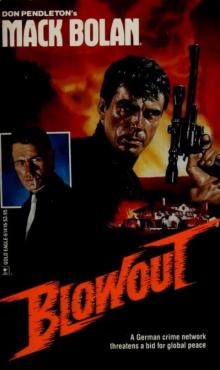 Blowout
Blowout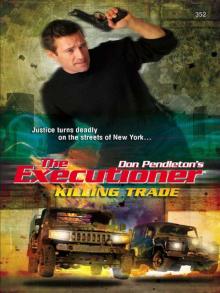 Killing Trade
Killing Trade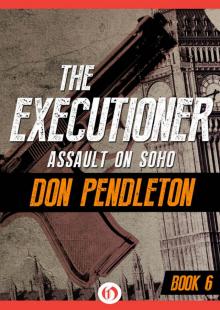 Assault on Soho
Assault on Soho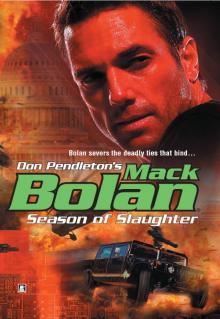 Season of Slaughter
Season of Slaughter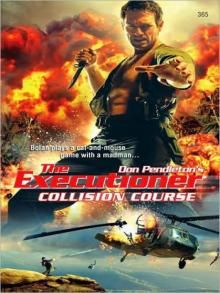 Collision Course
Collision Course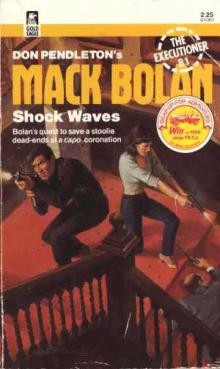 Shock Waves
Shock Waves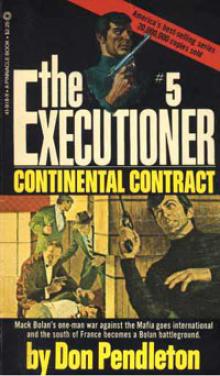 Continental Contract te-5
Continental Contract te-5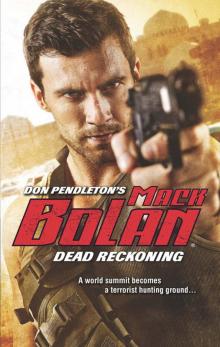 Dead Reckoning
Dead Reckoning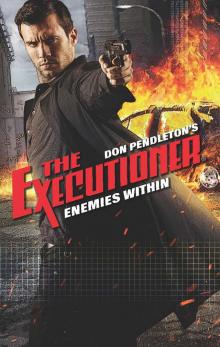 Enemies Within
Enemies Within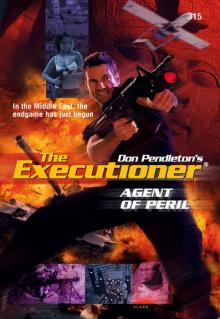 Agent of Peril
Agent of Peril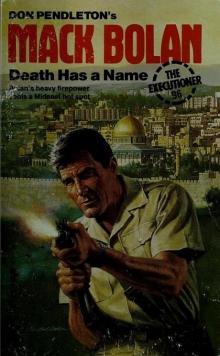 Death Has a Name
Death Has a Name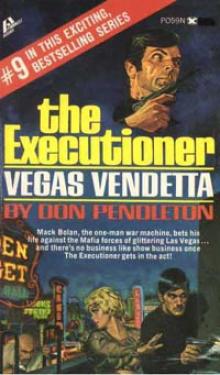 Vegas Vendetta te-9
Vegas Vendetta te-9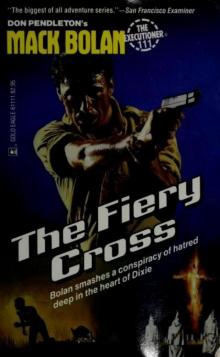 The Fiery Cross
The Fiery Cross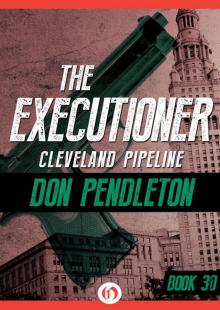 Cleveland Pipeline
Cleveland Pipeline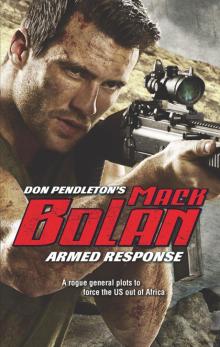 Armed Response
Armed Response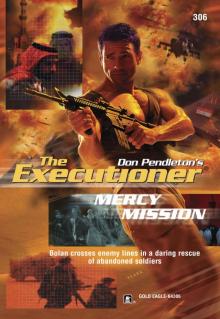 Mercy Mission
Mercy Mission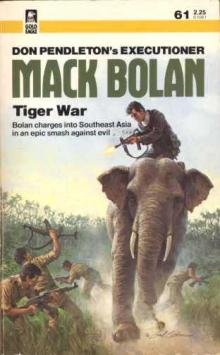 Tiger War te-61
Tiger War te-61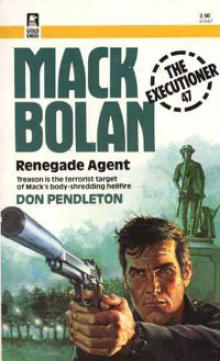 Renegade Agent te-47
Renegade Agent te-47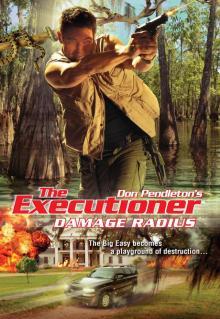 Damage Radius
Damage Radius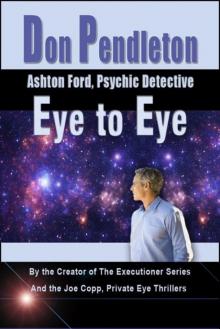 Eye to Eye
Eye to Eye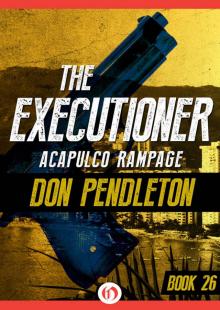 Acapulco Rampage
Acapulco Rampage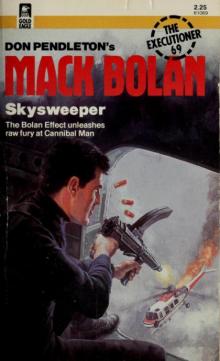 Skysweeper
Skysweeper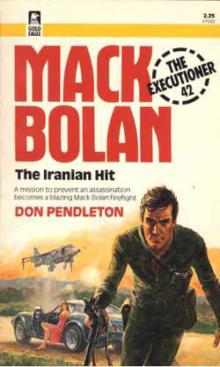 The Iranian Hit te-42
The Iranian Hit te-42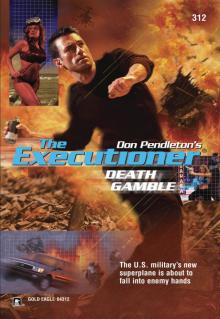 Death Gamble
Death Gamble Rebel Trade
Rebel Trade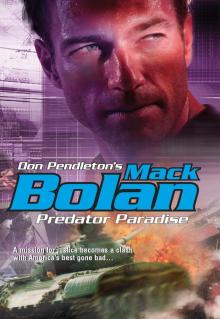 Predator Paradise
Predator Paradise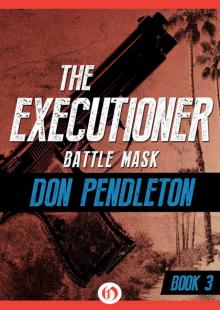 Battle Mask
Battle Mask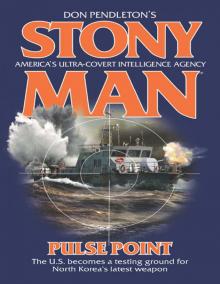 Pulse Point
Pulse Point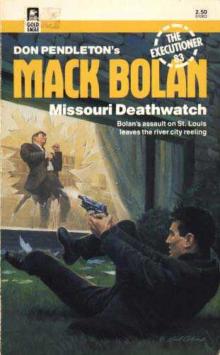 Missouri Deathwatch
Missouri Deathwatch Blood Tide
Blood Tide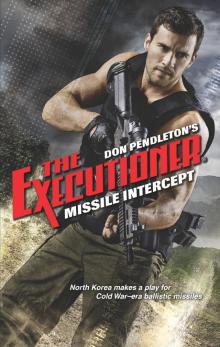 Missile Intercept
Missile Intercept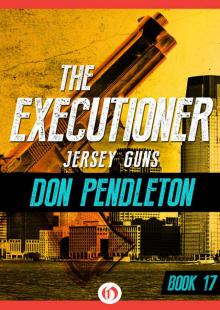 Jersey Guns
Jersey Guns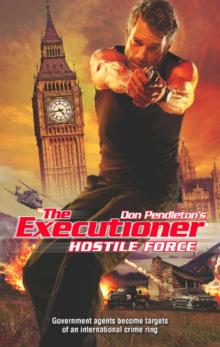 Hostile Force
Hostile Force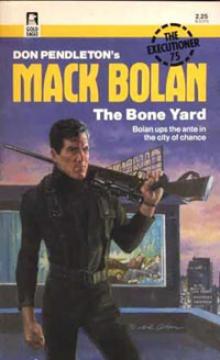 The Bone Yard te-75
The Bone Yard te-75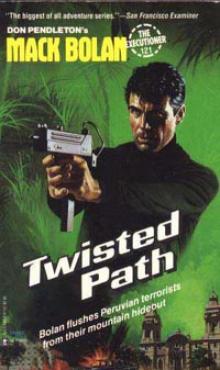 Twisted Path te-121
Twisted Path te-121 Mind to Mind
Mind to Mind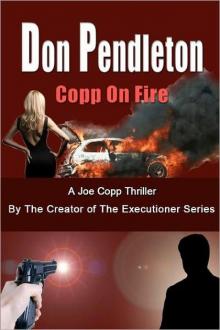 Copp On Fire, A Joe Copp Thriller (Joe Copp, Private Eye Series)
Copp On Fire, A Joe Copp Thriller (Joe Copp, Private Eye Series)